|
|
|
|
|
Oil On
Canvas, Real Flavor of Old Masters
|
|

|
ARTWORKS
INDEX
A B C D E F G H I J K L M N O P Q R S T U V W X Y Z |
ARTISTS
INDEX
A B C D E F G H I J K L M N O P Q R S T U V W X Y Z |
|
|
| | |
|
|
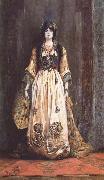 |
Georges Clairin -- Click Here
|
|
French Painter, 1843-1919
.French painter. In 1861 he entered the Ecole des Beaux-Arts in Paris, where he studied with Fran?ois Picot and Isidore Pils. He sent the first of many contributions to the Salon in 1866, an Episode of a Conscript of 1813 . By 1868 he had joined the painter Henri Regnault in a visit to Spain, where he was evidently impressed by Moorish architecture and influenced by the Spanish Orientalist painter Mariano Fortuny y Marsal; Clairin's Volunteers of Liberty: Episode from the Spanish Revolution was exhibited at the Salon of 1869 |
|
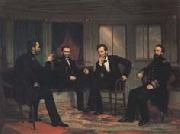 |
George P.A.Healy -- Click Here
|
|
American Painter, 1813-1894
American painter, active also in Europe. At the age of 17 he set up a studio in Boston after receiving encouragement from Thomas Sully, who was painting portraits there. Despite his youth and lack of training, he presented himself to the society figure Mrs Harrison Gray Otis and asked if he might paint her portrait (untraced); she agreed and later sponsored Healy's first trip abroad. In 1834 he entered the studio of Antoine-Jean Gros; the French master's suicide the following year ended Healy's only sustained period of artistic study. In Gros's studio he first encountered Thomas Couture, but they did not meet again until the next decade |
|
|
|
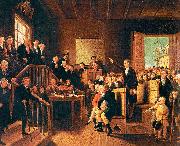 |
George Cooke -- Click Here
|
|
English Engraver, 1781-1849
Born in Maryland, Cooke abandoned a fledgling career in business at an early age in order to become a full time artist. After several years of painting portraits for a living, Cooke left for what would become a five year tour of Europe. His time there was mostly spent learning from and copying the works of the Renaissance master artists, with many of Cooke's copies being sent back to the United States for show or sale.
After returning to the U.S., Cooke and his wife spent the next decade traveling and working with no fixed home. His work took him throughout the Southern United States, where he primarily made his living painting portraits of both famous and ordinary people, and, by the 1840s, his portraits had earned him both financial success and regional fame. |
|
|
|
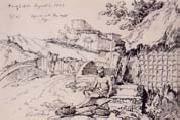 |
George Chinnery -- Click Here
|
|
1774-1852,English painter. Although long rumoured to be Irish, Chinnery was brought up in London, where he showed a precocious talent as a portrait painter in the traditions of Romney and Cosway. His grandfather, the calligrapher William Chinnery sr, was the author of Writing and Drawing Made Easy, Amusing and Instructive (London, 1750); his father, William jr, was also a writing master, and exhibited portraits at the Free Society of Artists. George entered the Royal Academy Schools in 1792 |
|
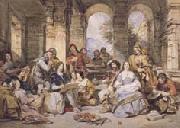 |
George Cattermole -- Click Here
|
|
1800-1868
English painter and illustrator. From the age of 14 Cattermole worked with his brother Richard (?1795-1858) for the antiquarian John Britton, producing architectural drawings. This training equipped him with a repertory of accurate architectural backgrounds, and from the later 1820s his work shifted from delineations of historic buildings to imaginative depictions in watercolour of episodes from literature and history and genre subjects with historical settings. He became the foremost historical watercolour painter, recreating the medieval, Elizabethan and 17th-century past. The intimate history pictures of Richard Parkes Bonington were undoubtedly influential, while Cattermole's bold and loose handling of watercolour owed much to David Cox, an admirer of his work. As an illustrator, his works included The Great Civil War of Charles I and Parliament (written by his brother Richard and published in two volumes in 1841 and 1855) and Evenings at Haddon Hall (1846). |
|
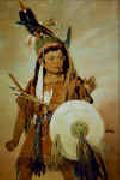 |
George Catlin -- Click Here
|
|
1796-1872
George Catlin Galleries
Catlin was born in Wilkes-Barre, Pennsylvania. Following a brief career as a lawyer, he produced two major collections of paintings of American Indians and published a series of books chronicling his travels among the native peoples of North, Central and South America. Claiming his interest in America??s 'vanishing race' was sparked by a visiting American Indian delegation in Philadelphia, he set out to record the appearance and customs of America??s native people.
Catlin began his journey in 1830 when he accompanied General William Clark on a diplomatic mission up the Mississippi River into Native American territory. St. Louis became Catlin??s base of operations for five trips he took between 1830 and 1836, eventually visiting fifty tribes. Two years later he ascended the Missouri River over 3000 km to Ft Union, where he spent several weeks among indigenous people still relatively untouched by European civilization. He visited eighteen tribes, including the Pawnee, Omaha, and Ponca in the south and the Mandan, Cheyenne, Crow, Assiniboine, and Blackfeet to the north. There, at the edge of the frontier, he produced the most vivid and penetrating portraits of his career. Later trips along the Arkansas, Red and Mississippi rivers as well as visits to Florida and the Great Lakes resulted in over 500 paintings and a substantial collection of artifacts.
When Catlin returned east in 1838, he assembled these paintings and numerous artifacts into his Indian Gallery and began delivering public lectures which drew on his personal recollections of life among the American Indians. Catlin traveled with his Indian Gallery to major cities such as Pittsburgh, Cincinnati, and New York. He hung his paintings ??salon style????side by side and one above another??to great effect. Visitors identified each painting by the number on the frame as listed in Catlin??s catalogue. Soon afterwards he began a lifelong effort to sell his collection to the U.S. government. The touring Indian Gallery did not attract the paying public Catlin needed to stay financially sound, and Congress rejected his initial petition to purchase the works, so in 1839 Catlin took his collection across the Atlantic for a tour of European capitals.
Catlin the showman and entrepreneur initially attracted crowds to his Indian Gallery in London, Brussels, and Paris. The French critic Charles Baudelaire remarked on Catlin??s paintings, ??M. Catlin has captured the proud, free character and noble expression of these splendid fellows in a masterly way.??
Catlin??s dream was to sell his Indian Gallery to the U.S. government so that his life??s work would be preserved intact. His continued attempts to persuade various officials in Washington, D.C. failed. He was forced to sell the original Indian Gallery, now 607 paintings, due to personal debts in 1852. Industrialist Joseph Harrison took possession of the paintings and artifacts, which he stored in a factory in Philadelphia, as security. Catlin spent the last 20 years of his life trying to re-create his collection. This second collection of paintings is known as the "Cartoon Collection" since the works are based on the outlines he drew of the works from the 1830s.
In 1841 Catlin published Manners, Customs, and Condition of the North American Indians, in two volumes, with about 300 engravings. Three years later he published 25 plates, entitled Catlin??s North American Indian Portfolio, and, in 1848, Eight Years?? Travels and Residence in Europe. From 1852 to 1857 he traveled through South and Central America and later returned for further exploration in the Far West. The record of these later years is contained in Last Rambles amongst the Indians of the Rocky Mountains and the Andes (1868) and My Life among the Indians (ed. by N. G. Humphreys, 1909). In 1872, Catlin traveled to Washington, D.C. at the invitation of Joseph Henry, the first secretary of the Smithsonian. Until his death later that year in Jersey City, New Jersey, Catlin worked in a studio in the Smithsonian ??Castle.?? Harrison??s widow donated the original Indian Gallery??more than 500 works??to the Smithsonian in 1879.
The nearly complete surviving set of Catlin??s first Indian Gallery painted in the 1830s is now part of the Smithsonian American Art Museum's collection. Some 700 sketches are in the American Museum of Natural History, New York City.
The accuracy of some of Catlin's observations has been questioned. He claimed to be the first white man to see the Minnesota pipestone quarries, and pipestone was named catlinite. Catlin exaggerated various features of the site, and his boastful account of his visit aroused his critics, who disputed his claim of being the first white man to investigate the quarry. Previous recorded white visitors include the Groselliers and Radisson, Father Louis Hennepin, Baron LaHonton and others. Lewis and Clark noted the pipestone quarry in their journals in 1805. Fur trader Philander Prescott had written another account of the area in 1831. |
|
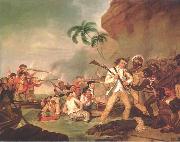 |
George Carter -- Click Here
|
|
an artist of considerable merit, was born at Colchester. He was an exhibitor at the Royal Academy in 1775, when he sent 'A Wounded Hussar on the Field of Battle.' He afterwards painted 'The Dying Pilgrim,' 'The Siege of Gibraltar,' and many portraits. He is known as the painter of 'The Death of Captain Cook,' 'The Fisherman's Return,' and other popular works, which have been engraved. He died at Hendon in 1795.
|
|
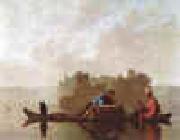 |
George Caleb Bingham -- Click Here
|
|
1811-1879
George Caleb Bingham Gallery
George Caleb Bingham (March 20, 1811 ?C July 7, 1879) was an American artist, whose work depicted his view of American life in the frontier lands along the Missouri River. Left to languish in obscurity, Bingham's work was rediscovered in the 1930s and he is now widely considered one of the greatest American painters of the 1800s.
Born in Augusta County, Virginia, Bingham was the second of seven children born to Henry Vest Bingham and Mary Amend. Upon their marriage, Matthias Amend, Mary's father, gave ownership to the family mill, 1,180 acres of land and several slaves to Henry with the agreement that Matthias could live with the family the rest of his life. Henry offered the land and mill as surety for a friend's debt and, when the friend died in 1818, all was lost. George's family soon moved to Franklin, Missouri "where the land was said to be bountiful, fertile and cheap."
Bingham was a self-taught artist. His sole childhood exposure to the field was as a nine-year-old boy, when famed American portraitist Chester Harding visited Franklin looking for business, having recently sketched Daniel Boone in Warren County, Missouri. George assisted Harding during his brief stay, an experience that left a powerful impression.
In 1823, Bingham's father, now judge of Howard County Court, died of malaria on December 26 at the age of thirty-eight. To keep the family going, Mary Bingham opened a school for girls and George, then twelve, worked as school janitor to help keep the family afloat. At age sixteen, Bingham apprenticed with cabinet maker Jesse Green. After Green moved, he apprenticed with another cabinet maker, Justinian Williams. Both tradesmen were Methodist ministers and, while under their tutelage, Bingham studied religious texts, preached at camp meetings and thought about becoming a minister himself. Bingham also considered becoming a lawyer.
However, by age nineteen, Bigham was painting portraits for $20.00 apiece, often completing the works in a single day. He drummed up work in both Franklin and Arrow Rock and, while his painting abilities were still developing, succeeded in impressing his patrons with his strong draftsmanship and ability to capture the likeness of his subject. Soon Bingham attempted to travel to St. Louis to ply his trade but contracted measles, which left him weak and permanently bald.
In 1836, Bingham married Sarah Elizabeth Hutchison, who bore him three children over the subsequent twelve years before dying at the age of twenty-nine. George married twice more, first to Eliza Thomas, who died in a mental institution in 1876, and then to Martha Lykins, who lived until 1890. George's mother, Mary, died in 1851.
By 1838, Bingham was already beginning to make a name for himself as a portrait artist in St. Louis, his studio visited by several prominent local citizens and statesmen, including the lawyer James S. Rollins who was to become a life-long friend. To further his education, George spent three months in Philadelphia, Pennsylvania before continuing on to New York City to visit the National Academy of Design exhibition.
Bingham was elected to the Missouri General Assembly in 1848.
From 1856 to 1859, Bingham studied art with the members of the D??sseldorf School in D??sseldorf, Germany. Critics claim that this caused him to abandon the rustic American style in his art. Upon his return, he began painting less, turning to politics in the post-Civil War years and serving as state treasurer and adjutant general. He was also president of the Board of Police Commissioners for Kansas City, Missouri in 1874, appointing the first chief of police there . Toward the end of his life he was a professor of art at the University of Missouri in Columbia, Missouri. |
|
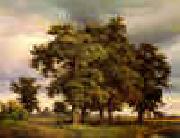 |
Georg-Heinrich Crola -- Click Here
|
|
1804-1879
German
Georg-Heinrich Crola Locations |
|
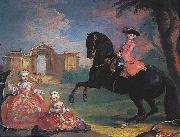 |
Georg Caspar Prenner -- Click Here
|
|
painted The children of Count Vorontsov in 1755 |
|
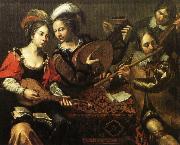 |
geoffrey chaucer -- Click Here
|
|
Born: c. 1340
Birthplace: London, England
Died: 1400
Best Known As: The author of The Canterbury Tales
|
|
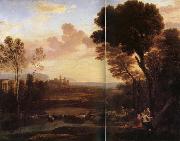 |
Gellee Claude,dit le Lorrain -- Click Here
|
|
French , 1600-1682 |
|
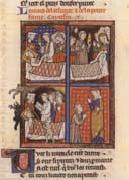 |
Gautier de Coinci -- Click Here
|
|
1177-1236 French,Born of noble stock, Gautier became a Benedictine novice at Saint-M??dard de Soissons in 1193 and prior at Vic-sur-Aisne in 1214, returning to Saint-M??dard to be grand prior (1233) until his death. His single work, preserved in nearly 80 manuscripts, is the massive Miracles de Nostre Dame, written at Vic (1214-27) and occupying some 30, 000 lines in two books. |
|
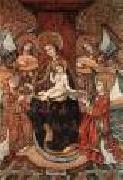 |
GARCIA, Pere -- Click Here
|
|
Spanish painter (active 1455-1479 in Barcelona) |
|
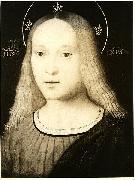 |
Galeazzo Campi -- Click Here
|
|
(1475/1477 - 1536) was an Italian painter of the Renaissance from Cremona. He was a pupil of Boccaccio Boccaccinis . His representation was rather rigid, but careful. His landscapes show influences of Perugino and Giovanni Bellini.
Campi was the head of an artist family, existing in the middle and end of 16th Century who lived in Cremona and left numerous works of art. His three sons, Giulio Campi, Antonio Campi and Vincenzo Campi are historically noteworthy.
|
|
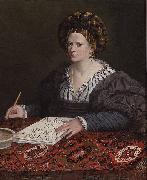 |
Gabriele Capellini -- Click Here
|
|
Gabriele Capellini was an Italian painter of the Renaissance.He was also called il Caligarino or il Calzolaretto (the little shoemaker), from his having first pursued that trade. He born in Ferrara, and there trained under Dosso Dossi, he was active c. 1520. For the church of San Francesco at Ferrara St. Peter and St. James and for San Giovannino the principal altar-piece, representing The Virgin and Infant with several Saints.
|
|
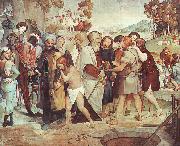 |
Friedrich Johann Overbeck -- Click Here
|
|
1789-1869
German
German religious painter. Expelled from the Vienna Academy because of his opposition to its classicism, he went to Rome and with Peter von Cornelius, Veit, Schadow-Godenhaus, and others, formed the group known as the Nazarenes. His first real successes were his frescoes for the Casa Bartholdy (now in Berlin) and for the Villa Massimo. Among his notable paintings are Christ Entry into Jerusalem and Christ Agony in the Garden. Overbeck sought to make his art serve religion. His influence was due more to the purity of his doctrine than to the power of his work, which is often lacking in pictorial appeal and in color. |
|
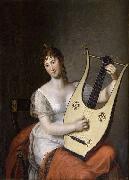 |
Friedrich Carl Groger -- Click Here
|
|
(14 October 1766, Plön - 9 November 1838, Hamburg) was a north-German portrait painter and lithographer. One of the most respected portraitists of his time in northern Germany, his works are to be found in several museums, including the Hamburger Kunsthalle, as well as in north German, Holstein and Danish private collections.
Gröger was the son of a tailor in Plön, where he grew up in modest circumstances. His parents wanted him to become a tailor or wood turner and opposed his early artistic activities. He was largely self taught in painting, though he had some contact in Lebeck with Tischbein and in 1785 was in the city of Lebeck, where he met Heinrich Jacob Aldenrath, his first, loyalest and lifelong friend - the Grögersweg in Hamburg-Barmbek named after him links the Tischbeinstraße with the Aldenrathsweg.
From 1789 he studied at Berlin's Akademie der Kenste. He and Aldenrath then went together to Hamburg, then on a joint study trip to Dresden and Paris, then back to Lebeck, where he worked until 1807. They then alternated between Hamburg, Copenhagen, Kiel and Lebeck, before finally settling in Hamburg in 1814. In 1792 Gröger was made an honorary member of the Gesellschaft zur Beförderung gemeinnetziger Tätigkeit in Lebeck.
Gröger developed from a miniature painter into a portrait painter, who towards the end of his life preferred three quarter bust portraits. Aldenrath took over the miniature painting side of their joint business. After lithography developed in northern Germany, they both worked in this medium individually as well as jointly under the business name Firma Gröger & Aldenrath.
|
|
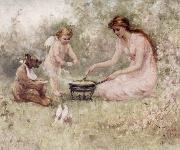 |
Frederick Stuart Church -- Click Here
|
|
Painter , Illustrator and Artist .
American , 1842-1924
was an American artist, working mainly as an illustrator and especially known for his (often allegorical) depiction of animals. He was born in Grand Rapids, Michigan. His father was an important figure in politics as well as a well-known lawyer. At the age of 13 he left school and took a job at the then newly-established American Express Company in Chicago, with his parents intending him to have a business career. Being nineteen at the outbreak of the Civil War he served in the Union Army. After his discharge he returned to Chicago, having decided to devote his life to art, and started studying drawing under Walter Shirlaw at the city's Academy of Design. In 1870 he took the decision to continue his studies in New York City, which became his home for the rest of his life. He enrolled at the National Academy of Design, where he was taught by Lemuel Wilmarth. He joined the Art Students League, headed by his old teacher Walter Shirlaw, in which he remained involved for the rest of his life. Unlike many other Americans of his time who felt themselves to be living in a cultural backwater, Church - while he did think that an artist needed to be formally taught - saw no need to study art in Europe and in fact only crossed the Atlantic late in his life. He often expressed outspoken pride in original American art and declaring that "foreign art" had "little to teach Americans". This might be a reflection of the attitudes taken by the strong nativist movements active during his young age, among other places in Chicago when he lived there. |
|
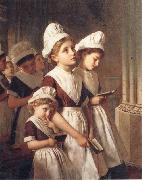 |
Frederick George Cotman -- Click Here
|
|
British Painter , 1850-1920 |
|
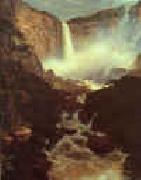 |
Frederick Edwin Church -- Click Here
|
|
1826-1900
Frederick Edwin Church Galleries
Frederic Edwin Church (May 4, 1826 ?C April 7, 1900) was an American landscape painter born in Hartford, Connecticut. He was a central figure in the Hudson River School of American landscape painters. While committed to the natural sciences, he was "always concerned with including a spiritual dimension in his works".
The family wealth came from Church's father, Joseph Church, a silversmith and watchmaker in Hartford, Connecticut.(Joseph subsequently also became an official and a director of The Aetna Life Insurance Company) Joseph, in turn, was the son of Samuel Church, who founded the first paper mill in Lee, Massachusetts in the Berkshires, and this allowed him(Frederic) to pursue his interest in art from a very early age. At eighteen years of age, Church became the pupil of Thomas Cole in Catskill, New York after Daniel Wadsworth, a family neighbor and founder of the Wadsworth Atheneum, introduced the two. In May 1848, Church was elected as the youngest Associate of the National Academy of Design and was promoted to Academician the following year. Soon after, he sold his first major work to Hartford's Wadsworth Atheneum.
Church settled in New York where he taught his first pupil, William James Stillman. From the spring to autumn each year Church would travel, often by foot, sketching. He returned each winter to paint and to sell his work.
Between 1853 and 1857, Church traveled in South America, financed by businessman Cyrus West Field, who wished to use Church's paintings to lure investors to his South American ventures. Church was inspired by the Prussian explorer Alexander von Humboldt's Cosmos and his exploration of the continent; Humboldt had challenged artists to portray the "physiognomy" of the Andes.
|
|
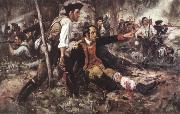 |
Frederick Coffay Yohn -- Click Here
|
|
American , 1875-1933.
|
|
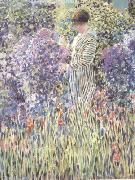 |
frederick carl frieseke -- Click Here
|
|
American Impressionist Painter, 1874-1939
was an American Impressionist painter. He was born in Owosso, Michigan and studied at the School of the Art Institute of Chicago and the Acad??mie Julian in Paris. Frieseke and his family resided for fourteen years in Giverny, which was also home to Monet. He had a great influence on the Americans at the colony there, |
|
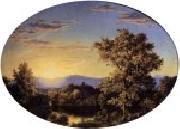 |
Frederic Edwin Church -- Click Here
|
|
American Hudson River School Painter, 1826-1900 ..American painter. He was a leading representative of the second generation of the HUDSON RIVER SCHOOL, who made an important contribution to American landscape painting in the 1850s and 1860s. The son of a wealthy and prominent businessman, he studied briefly in Hartford with two local artists, Alexander Hamilton Emmons (1816-84) and Benjamin Hutchins Coe (1799-1883). Thanks to the influence of the Hartford patron DANIEL WADSWORTH, in 1844 he became the first pupil accepted by Thomas Cole. This was an unusual honour |
|
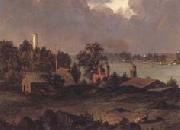 |
Frederic E.Church -- Click Here
|
|
1826-1900
American painter. He was a leading representative of the second generation of the HUDSON RIVER SCHOOL, who made an important contribution to American landscape painting in the 1850s and 1860s. The son of a wealthy and prominent businessman, he studied briefly in Hartford with two local artists, Alexander Hamilton Emmons (1816-84) and Benjamin Hutchins Coe (1799-1883). Thanks to the influence of the Hartford patron DANIEL WADSWORTH, in 1844 he became the first pupil accepted by Thomas Cole. |
|
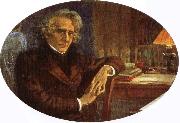 |
frederic chopin -- Click Here
|
|
Period: Romantic (1820-1869)
Country: Poland
Born: March 01, 1810 in Zelazowa Wola, Poland
Died: October 17, 1849 in Paris, France
Genres: Ballet, Chamber Music, Concerto, Keyboard Music, Miscellaneous Music, Vocal Music |
|
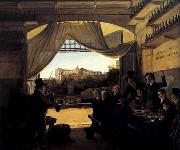 |
Franz Ludwig Catel -- Click Here
|
|
German Painter, 1778-1856,German painter. As a child, Catel helped carve small wooden figures in the toyshop owned by his father. With the encouragement of the printmaker Daniel Chodowiecki, Catel enrolled at the Berlin Kunstakademie, becoming a full member in 1806. In 1807, after already making a name for himself as a watercolourist and book illustrator, he began several years of study at the Acad?mie des Beaux-Arts in Paris, where his main subject was oil painting. In 1811 he moved to Italy, where he stayed for the rest of his life. Initially he wavered between Joseph Anton Koch's classically heroic style of landscape painting and the Romantic lyricism of the Nazarenes. Eventually he found that he could best exercise his technical ability, and most quickly achieve fame and fortune, by producing Italian landscapes. He specialized in Neapolitan scenes depicting festive folk customs; and such paintings proved popular with the mass of wealthy travellers who came to Italy after the Napoleonic Wars. |
|
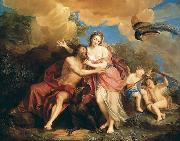 |
Franz Christoph Janneck -- Click Here
|
|
painted Jupiter and Juno in |
|
 |
Frank Crawford Penfold -- Click Here
|
|
Frank (Francis) Crawford Penfold (1849-1921) was an American artist and teacher, remembered for his genre, landscape and portrait paintings, many of which he completed while living in Pont-Aven in Brittany. |
|
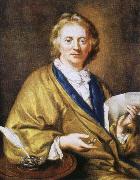 |
francois couperin -- Click Here
|
|
was a French Baroque composer, organist and harpsichordist. François Couperin was known as "Couperin le Grand" (Couperin the Great) to distinguish him from the other members of the musically talented Couperin family.
|
|
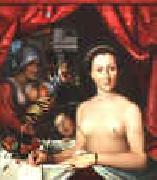 |
Francois Clouet -- Click Here
|
|
1510-1572 French
Francois Clouet Locations
The earliest reference to him is a document dated December 1541 (see Jean Clouet), in which the king renounces for the benefit of François his father estate, which had escheated to the crown as the estate of a foreigner. In this document, the younger Clouet is said to have followed his father very closely in his art. Like his father, he held the office of groom of the chamber and painter in ordinary to the king, and so far as salary is concerned, he started where his father left off. Many drawings are attributed to this artist, often without perfect certainty. There is, however, more to go upon than there is in the case of his father.
As the praises of Francois Clouet were sung by the writers of the day, his name was carefully preserved from reign to reign, and there is an ancient and unbroken tradition in the attribution of many of his pictures. There are not, however, any original attestations of his works, nor are any documents known which would guarantee the ascriptions usually accepted. To him are attributed the portraits of Francis I at the Uffizi and at the Louvre, and various drawings relating to them. He probably also painted the portrait of Catherine de Medici at Versailles and other works, and in all probability a large number of the drawings ascribed to him were from his hand. One of his most remarkable portraits is that of Mary, queen of Scots, a drawing in chalks in the Bibliotheque Nationale, and of similar character are the two portraits of Charles IX and the one at Chantilly of Marguerite of France. Perhaps his masterpiece is the portrait of Elizabeth of Austria in the Louvre. This piece made an important impression on Claude Levi-Strauss. In particular it helped inspire his theory of the mod??le reduit, or of works of art as simplifications and scale models of the realities they represent, and other theories of artworks, in his book The Savage Mind.
Clouet resided in Paris in the rue de Ste Avoye in the Temple quarter, close to the Hotel de Guise, and in 1568 is known to have been under the patronage of Claude Gouffier de Boisy, Seigneur d Oiron, and his wife Claude de Baune. Another ascertained fact concerning Francois Clouet is that in 1571 he was summoned to the office of the Court of the Mint, and his opinion was taken on the likeness to the king of a portrait struck by the mint. He prepared the death-mask of Henry II, as in 1547 he had taken a similar mask of the face and hands of Francis I., in order that the effigy to be used at the funeral might be prepared from his drawings; and on each of these occasions he executed the painting to be used in the decorations of the church and the banners for the great ceremony.
Several miniatures are believed to be his work, one very remarkable portrait being the half-length figure of Henry II in the collection of J. Pierpont Morgan. Another of his portraits is that of Francois, duc d Alençon in the Jones collection at South Kensington, and certain representations of members of the royal family which were in the Hamilton Palace collection and the Magniac sale are usually ascribed to him. He died on the 22nd of December 1572, shortly after the massacre of St Bartholomew, and his will, mentioning his sister and his two illegitimate daughters, and dealing with the disposition of a considerable amount of property, is still in existence. His daughters subsequently became nuns.
His work is remarkable for the extreme accuracy of the drawing, the elaborate finish of all the details, and the exquisite completeness of the whole portrait. He must have been a man of high intelligence, and of great penetration, intensely interested in his work, and with considerable ability to represent the character of his sitter in his portraits. His coloring is perhaps not specially remarkable, nor from the point of style can his pictures be considered especially beautiful, but in perfection of drawing he has hardly any equal. |
|
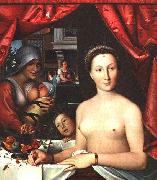 |
Francois Clouet -- Click Here
|
|
François Clouet (c. 1510 - 22 December 1572), son of Jean Clouet, was a French Renaissance miniaturist and painter, particularly known for his detailed portraits of the French ruling family.
|
|
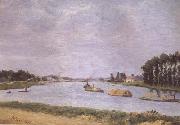 |
Francisco Oller y Cestero -- Click Here
|
|
San Juan,Puerto Rico 1833-Santurce 1917
Puerto Rican painter. He studied from 1851 to 1853 at the Real Academia de Bellas Artes de San Fernando in Madrid under Federico de Madrazo y Kentz and in Paris from 1858 to 1863 under Thomas Couture and Charles Gleyre at the Ecole Imperiale et Speciale de Dessin and at the Academie Suisse. There he met Camille Pissarro, Paul Cezanne and Armand Guillaumin, who together with Couture and the work of Courbet influenced his work towards Realism and Impressionism. |
|
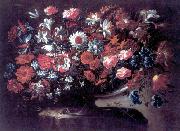 |
Francisco Lopez Caro -- Click Here
|
|
(1578-1662) was a Spanish painter of the Baroque period. Born in Seville, he was a pupil of Juan de las Roelas. We know very little of him, save that he painted with indifferent success in Seville until about 1660, when he went to Madrid where he spent the remainder of his life, and died in 1662. His works were mainly portraits, some of which are in private collections in Madrid, Salamanca, Granada, and Seville. |
|
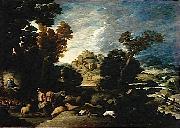 |
Francisco Collantes -- Click Here
|
|
(1599-1656) was a Spanish Baroque era painter.
Collantes was born in Madrid but sought influence from Jusepe de Ribera and the Neapolitan School. He was also influenced by 16th century Venetian painters and was renowned for his landscapes and biblical scenes. |
|
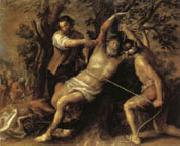 |
Francisco Camilo -- Click Here
|
|
Spanish painter (b. 1615, Madrid, d. 1673, Madrid)
was an Italian painter of the Renaissance period. He was born at Bassano del Grappa near Venice, the eldest son of Jacopo Bassano and grandson of Francesco da Ponte the Elder. He studied with his father and worked in the Bassano family workshop along with his three brothers, including Giambattista and Girolamo. He moved to Venice where he ran the branch of the family business, and where he was employed to paint a series of historical pictures in the Doge's Palace, but prone to hypochondria and other ailments, committed suicide by throwing self-defenestration soon after his father's death in 1592. |
|
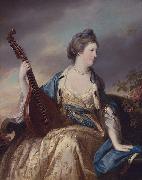 |
Francis Cotes -- Click Here
|
|
(20 May 1726 - 16 July 1770) was an English painter, one of the pioneers of English pastel painting, and a founder member of the Royal Academy in 1768.
He was born in London, the eldest son of Robert Cotes, an apothecary (Francis's younger brother Samuel Cotes (1734 - 1818) also became an artist, specialising in miniatures). Cotes trained with portrait painter George Knapton (1698 - 1778) before setting up his own business in his father's business premises in London's Cork Streetelearning, incidentally, much about chemistry to inform his making of pastels.
An admirer of the pastel drawings of Rosalba Carriera, Cotes concentrated on works in pastel and crayon (some of which became well-known as engravings). After pushing crayon to its limit as a mediumealthough he was never to abandon it entirelye - otes turned to oil painting as a means of developing his style in larger-scale works. In his most successful paintings, particularly those of the early 1760s, the oil paint is thinly applied, in imitation of his pastel technique, and imbued with charm, inviting comparisons with Allan Ramsay (1713 - 1784) and Sir Joshua Reynolds. They have clarity and warmth and possess a remarkable attention to costume. In 1763, he bought a large house (later occupied by George Romney) in Cavendish Square.
One of the most fashionable portrait painters of his day, Cotes helped found the Society of Artists and became its director in 1765. At the peak of his powers, Cotes was invited to become one of the first members of the Royal Academy, but died just two years later, aged 44, in Richmond.
He also taught pastel skills to John Russell, and his skills were described in book The Elements of Painting with Crayon.
|
|
|
|
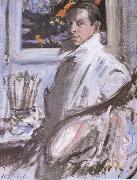 |
Francis Campbell Boileau Cadell -- Click Here
|
|
Scottish, 1883-1937, was a Scottish painter associated with the Scottish Colourists. Francis Cadell was born in Edinburgh and, from the age of 16, studied in Paris at the Academie Julian, where he was in contact with the French avant-garde of the day. While in France, his exposure to work by the early Fauvists, and in particular Matisse, proved to be his most lasting influence. After his return to Scotland, he was a regular exhibitor in Edinburgh and Glasgow, as well as in London. He painted landscapes, interiors, still life and figures in both oil and watercolour, but he is particularly noted for his portraits, depicting his subject with vibrant waves of colour. He enjoyed the landscape of Iona enormously, which he first visited in 1912 and features prominently in his work. |
|
|
|
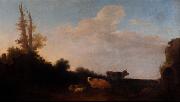 |
Francesco Giuseppe Casanova -- Click Here
|
|
(1727-1803) was an Italian painter and a younger brother of Giacomo Casanova.
Francesco Casanova Battaglia di cavalleria (oil on canvas, Louvre, Paris)Born in London, he trained in Venice under Francesco Guardi, then was a pupil of Francesco Simonini, a battle painter who took Borgognone as his model. Besides battle-pieces Casanova painted landscapes with figures and cattle, as well as pastoral subjects. He arrived in Paris in 1751, and went to Dresden in the following year, where he remained until 1757, spending his time in copying the finest battle-pieces of the famous Electoral Gallery. On his return to Paris he studied for a time under Charles Parrocel, and was received into the Academy in 1763. He exhibited at the Salon at intervals from that year till 1783, when he again quit France, going to Vienna, where he resided during the remainder of his life. Philip James de Loutherbourg was his pupil for a time.
|
|
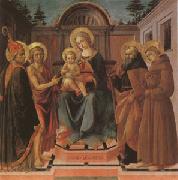 |
Francesco di Stefano called Pesellino -- Click Here
|
|
Florence ca 1422-1457 |
|
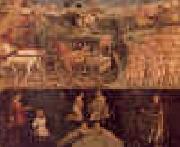 |
Francesco del Cossa -- Click Here
|
|
Italian
c1435-c1478
Francesco del Cossa Location
Italian painter. He was a leading representative of the Ferrarese school and was regarded, with Ercole de Roberti, as the founder of the Bolognese school. His principal works include The Glorification of March, April, and May, frescoes in the Schifanoia Palace, Ferrara; some admirable portraits of the artist contemporaries; Madonna Enthroned (Bologna); Madonna and Child with Angels, St. Liberal, and St. Lucy (National Gall. of Art, Washington, D.C.); and an altarpiece representing scenes from the life of St. Vincent Ferrer (National Gall., London, and the Vatican). |
|
|
|
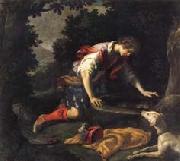 |
Francesco Curradi -- Click Here
|
|
Italian Baroque Era Painter, 1570-1661
son of Taddeo Curradi. He produced many devotional works and had a large clientele. At their best, the works are distinguished by lucid draughtsmanship, simple compositions and elegant, melancholy figures. Curradi was trained in the studio of Giovan Battista Naldini and in 1590 matriculated from the Accademia del Disegno, Florence. His first independent works include a Virgin and Child with Saints (1597; Volterra, S Lino) and a Birth of the Virgin (1598; Volterra Cathedral), both signed and dated. These paintings reflect the new clarity and directness introduced into Florentine painting by such artists as Santi di Tito and Jacopo Ligozzi. Subsequent works include a Crucifixion (1600) and a Virgin and Saints (1602; both Legnaia, S Angelo). In these the influence of Naldini yielded to that of Lodovico Cigoli and his circle, while the mildness of expression in the figures was inspired by Domenico Passignano. An album of 87 red chalk drawings, with scenes from the Life of St Mary Magdalene dei Pazzi (1606; Florence, convent of the Carmelites at Careggi) distinguished by their precision and clear, characteristically Florentine compositions, contributed to the iconography of this popular Counter-Reformation saint. In 1607 Curradi was commissioned to portray her mortal remains, and this painting, together with the drawings, |
|
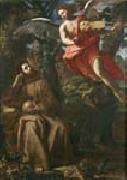 |
Francesco Cozza -- Click Here
|
|
1605-1682)was an Italian painter of the Baroque period.
He was born in Stilo in Calabria and died in Rome. As a young man, he went to Rome and apprenticed with Domenichino. He traveled with Domenichino to Naples.
He is best known for his expansive panegyric ceiling fresco, Apotheosis of Pamphili House, in the library of Palazzo Pamphili in Piazza Navona (1667-73). He also frescoed the Stanza del Fuoco in Palazzo Pamphili in Valmontone, 1658-59), where he worked along with Pier Francesco Mola, Gaspar Dughet, Mattia Preti, Giovanni Battista Tassi (il Cortonese), and Guglielmo Cortese. He also participated with Carlo Maratta and Domenico Maria Canuti in fresco decorations of the Palazzo Altieri. His landscape paintings recall the Carracci style of paesi con figure piccole (landscapes with small figures). He painted a Madonna del Riscatto in church of Santa Francesca Romana. He was received into the Accademia di San Luca at Rome in 1650. |
|
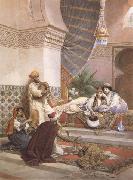 |
Francesco Coleman -- Click Here
|
|
Italian, 1851-1918 |
|
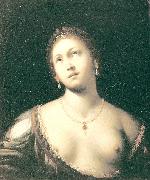 |
Francesco Cairo -- Click Here
|
|
(1607-1665) was an Italian painter active in Baroque Lombardy and Piedmont.
He was born and died in Milan. It is not known where he obtained his early training though he is strongly influenced by the circle of il Morazzone, in works such as the Saint Teresa altarpiece in the Certosa di Pavia.
In 1633, Cairo moved to Turin to work as a court painter, including portraits, to Vittorio Amedeo I of the House of Savoy. Between 1637-1638, Cairo travelled to Rome, where he encounters the works of Pietro da Cortona, Guido Reni and of the Caravaggisti. He returns to Lombardy to complete altarpieces for the Certosa of Pavia and a church at Casalpusterlengo. He painted a St. Theresa for San Carlo in Venice. Between 1646-1649, he returns to Turin, and paints an altarpiece for Savigliano and the church of San Salvario. He is also known as Il Cavaliere del Cairo, because in Turin, he received the order of SS. Lazarus and Maurice in recognition of his merit.
Many of his works are eccentric depictions of religious ecstasies; the saints appear liquefied and contorted by piety. He often caps them with exuberant, oriental turbans. |
|
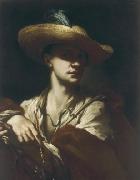 |
Francesco Caccianiga -- Click Here
|
|
Francesco Caccianiga (1700-1781) was an Italian painter and engraver.
He was born in Milan. In Bologna, he became a pupil of Marcantonio Franceschini. He afterwards visited Rome, where he established himself under the patronage of Prince Borghese, for whom he executed some considerable works in the Palazzo and the Villa Borghese. His principal works are at Ancona, where he painted several altar-pieces, among them, Marriage of the Virgin and Last Supper. |
|
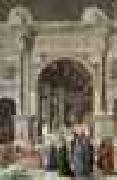 |
Fra Carnevale -- Click Here
|
|
Italian, active 1445-1484 |
|
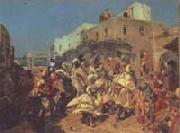 |
Fernand cormon -- Click Here
|
|
French Academic Painter, 1845-1924
French painter. He studied initially in Brussels under Jean-Fran?ois Portaels. In 1863 he returned to Paris, where for three years he was a pupil of Alexandre Cabanel and Eug?ne Fromentin. He made his d?but at the Salon in 1868 and in 1870 received a medal for the Marriage of the Niebelungen (1870; ex-Mus. B.-A., Lisieux, 1970). His painting the Death of King Ravana (1875; Toulouse, Mus. Augustins), taken from the Indian epic poem the Ramayana, was criticized for the choice of an obscure subject but was nevertheless awarded the Prix de Salon in 1875. Soon afterwards Cormon left France for Tunisia. After his return in 1877 he exhibited regularly at the Salon until his death, establishing a reputation as a painter of historical and religious subjects; he also produced some portraits. |
|
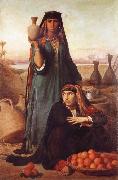 |
Felix-Auguste Clement -- Click Here
|
|
French, 1826-1888 |
|
|
|
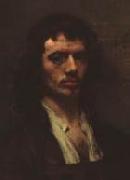 |
FABRITIUS, Carel -- Click Here
|
|
Dutch Baroque Era Painter, 1622-1654
Painter. His oeuvre consists of a scant dozen paintings, since research has rigorously discounted many previously attributed works. These few paintings, however, document the painter's unique development within his brief 12-year career. He is often mentioned as being the link between Rembrandt and the Delft school, particularly Pieter de Hooch and Jan Vermeer, whose depiction of light owes much to Fabritius's late works in which his use of cool silvery colours to define forms in space marks a radical departure |
|
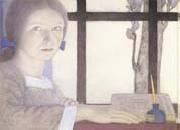 |
F. Cayley Robinson -- Click Here
|
|
British Painter and Illustrator, 1862-1927 |
|
 |
Eyre Crowe -- Click Here
|
|
Sir Eyre Alexander Barby Wichart Crowe GCB GCMG (30 July 1864 - 28 April 1925) was a British diplomat. Crowe was appointed Companion of the Order of the Bath (CB) in 1907, Knight Commander of the Order of St Michael and St George (KCMG) in 1911, Knight Commander of the Order of the Bath (KCB) in 1917, Knight Grand Cross of the Order of St Michael and St George (GCMG) in the 1920 New Year Honours,[1] and Knight Grand Cross of the Order of the Bath (GCB) in the 1923 Birthday Honours.
Eyre Crowe was born in Leipzig and educated at Desseldorf and Berlin and in France, with a German mother and a German wife. His father Joseph Archer Crowe had been a British consul-general and ended his career as commercial attache for all of Europe (1882-1896). His grandfather Eyre Evans Crowe was a journalist, writer and historian, and his uncle, Eyre Crowe, was an artist.
Crowe first visited England in 1882 when he was seventeen to cram for the Foreign Office examination and at the time was not fully fluent in English.[2] Even later in life it was reported that when angry he spoke English with a German accent. He married his widowed German cousin Clema Gerhardt in 1903. Crowe's wife's uncle was Henning von Holzendorff, who was to become the Chief of the German Naval Staff in the First World War. Due to being half-German, Crowe was often attacked in the press and by Christabel Pankhurst and William le Queux for this during the First World War.
|
|
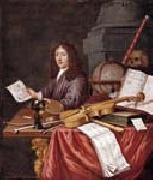 |
Evert Collier -- Click Here
|
|
(c. 1640 - few days before September 8, 1708) was a Dutch painter known for vanitas still-life and trompe l'oeil paintings. His first name is sometimes spelled "Edward" or "Edwaert" or "Eduwaert" or "Edwart," and his last name is sometimes spelled "Colyer" or "Kollier".
Evert Collier was born between 1630 and 1650 in Breda, Noord-Brabant, and died in 1708. He is believed to have trained in Haarlem, as his earliest paintings show the influence of Pieter Claesz and Vincent Laurensz van der Vinne. By 1667, he had moved to Leiden, where he became a member of the Guild of St. Luke in 1673. He moved to Amsterdam by 1686 and to London in 1693. He was buried September 8, 1708 at St. James's, Piccadilly. |
|
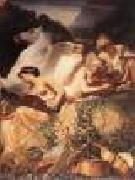 |
EVERDINGEN, Caesar van -- Click Here
|
|
Dutch Baroque Era Painter, 1617-167 |
|
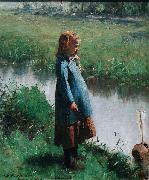 |
Evariste Carpentier -- Click Here
|
|
(1845 -1922 ) - Painter
|
|
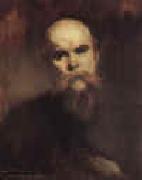 |
Eugene Carriere -- Click Here
|
|
French Symbolist Painter, 1849-1906
French painter and lithographer. He is best known for his spiritual interpretations of maternity and family life. Characteristic are his Crucifixion and Maternity (both: Louvre). He also painted some large canvases for the Sorbonne and the Hôtel de Ville, Paris. Among his works are many notable portraits, including those of Verlaine, Daudet, and Edmond de Goncourt. |
|
|
|
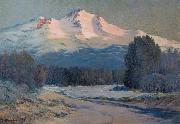 |
Ernst William Christmas -- Click Here
|
|
(1863-1918) was an Australian painter. He was born near Adelaide, South Australia in 1863 and studied art in Adelaide, Sydney and in London. He painted widely in England, exhibiting in the early years of the century at the Royal Academy, the Royal Institute of Oil Painters, the Royal Society of British Artists, the Royal Glasgow Institute of Fine Arts and in the provinces.
He was elected to the British Royal British Academy in 1909. In 1910-11, he painted mountains and lakes in Argentina and Chile. He lived in San Francisco around 1900 and again around 1915. He was an avid traveller, but spent the last two years of his life in Hawaii, where he painted landscapes including dramatic volcano scenes. Ernest William Christmas died in Honolulu in 1918.
|
|
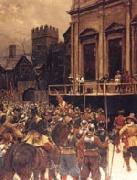 |
Ernest Crofts -- Click Here
|
|
English Painter , b. 15 September 1847- d. 19 March 1911
was an English painter who specialized in battle scenes. Ernest Crofts, RA lived at 'The Green' which he helped to re-design, next to Blythburgh church in Suffolk. |
|
 |
ENGELBRECHTSZ., Cornelis -- Click Here
|
|
Dutch painter (b. 1468, Leiden, d. 1533, Leiden).
|
|
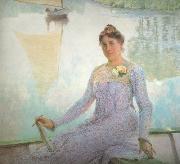 |
Emile Claus -- Click Here
|
|
Belgian Painter, 1849-1924
Belgian painter. He had various menial jobs before the composer Peter Benoet persuaded his father to let him study at the Koninklijke Academie voor Schone Kunsten in Antwerp. He was taught there by Nicaise De Keyser and Jacob Jacobs (1812-79) but found the atmosphere uncongenial and soon left. In 1879 he travelled around Spain and North Africa and in 1881 went to live with his sister at Waereghem. His painting of this period was influenced by Charles Verlat and depicted rural subjects |
|
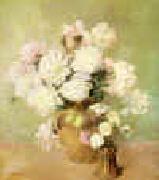 |
Emil Carlsen -- Click Here
|
|
Danish-born American Painter, 1853-1932
Soren Emil Carlsen (1853 ?C 1932) was an American painter associated with the Cos Cob Art Colony.
Carlsen painted primarily landscapes and still lifes. His fastidiously painted still lifes are influenced by Chardin and often depict copper pans, game, or flowers. He was an art teacher for over fifty years; his students included James Swinnerton. |
|
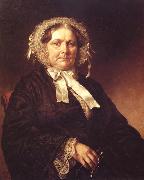 |
Elliott Charles Loring -- Click Here
|
|
born in Scipio, New York, in December 1812; died in Albany, NY., 25 Sept., 1868.
died in Albany, NY., 25 Sept., 1868., American painter. Resolved to become an artist, he moved from Syracuse, NY, to New York City around 1830, bearing a letter of introduction to John Trumbull and reportedly receiving some brief instruction from him. Elliott spent six months in the studio of the genre painter John Quidor but returned to upstate New York, where he worked for several years as an itinerant portrait painter. Back in New York City by 1839, his art steadily improved; Henry Inman met him around 1844-5, whereupon he predicted: 'When I am gone that young man will take my place'. Elliott's portrait of Capt. John Ericsson (c. 1845; untraced) won praise in 1845 as 'the best American portrait since [Gilbert] Stuart', and from that date he was acknowledged as New York's leading portrait painter. His facility for capturing a vivid, characteristic likeness and his genial personality assured a constant stream of private patrons and public commissions. In 1867 it was reported that he had executed nearly 700 portraits. |
|
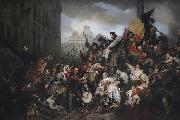 |
Egide Charles Gustave Wappers -- Click Here
|
|
(23 August 1803 Antwerp - 6 December 1874 Paris) is best known as the Belgian painter Gustave Wappers, while his oeuvre is also reckoned Flemish. He signed works by the name Gustaf Wappers.
He studied at the Royal Academy of Fine Arts in Antwerp, and during 1826 in Paris. The Romantic movement with its new ideas about art and politics was astir in France. Wappers was the first Belgian artist to take advantage of this state of affairs, and his first painting, "The Devotion of the Burgomaster of Leiden," appeared at the appropriate moment and had marvellous success in the Brussels Salon during 1830, the year of the Belgian Revolution. While political, this remarkable work revolutionized the direction of Flemish painters.
Episode of the Belgian Revolution of 1830 (1834), Museum of Ancient Art, Brussels.Wappers was invited to the court at Brussels, and was favoured with commissions. In 1832 the city of Antwerp appointed him Professor of Painting. He exhibited his masterpiece, "Episode of the Belgian Revolution of 1830" or rather "Episode of the September Days of 1830 on the Grand Place of Brussels", (Museum of Ancient Art, Brussels) at the Antwerp Salon in 1834. He was subsequently appointed painter to Leopold, King of the Belgians. At the death of Matthieu-Ignace Van Bree in 1839 he was elavated to director of the Antwerp Academy. One of his pupils was Ford Madox Brown; another was the Czech history painter Karel Javůrek.
His works are numerous; some of them in traditional devotional modes ("Christ Entombed"), while others illustrate the Romantic view of history: "Charles I taking leave of his Children", "Charles IX", "Camoens", "Peter the Great at Saardam", and "Boccaccio at the Court of Joanna of Naples".
Louis Philippe gave him a commission to paint a large painting for the gallery at Versailles, "The Defence of Rhodes by the Knights of St John of Jerusalem". He finished the work in 1844, the same year that he received the title of baron from Leopold I.After retiring as director of the Antwerp Academy, he settled in 1853 in Paris, where he died in 1873 - having been one of the most talented flagships of Romanticism in Belgium.
|
|
 |
Edward William Cooke -- Click Here
|
|
British Painter, 1811-1880
was an English painter and gardener. Cooke was born in London. His father George and uncle, William Bernard, were both well-known engravers and Cooke was raised in their wide artistic circle. He was a precocious draughtsman and a skilled engraver from an early age, displayed an equal preference for marine subjects and published his 'Shipping and Craft' C a series of accomplished engravings C when he was 18, in 1829. He benefited from the advice of many of his father's associates, notably Clarkson Stanfield (whose principal marine follower he became) and David Roberts. Cooke began painting in oils in 1833, took formal lessons from James Stark in 1834 and first exhibited at the Royal Academy and British Institution in 1835, by which time his style was essentially formed. He went on to travel and paint with great industry at home and abroad, indulging his love of the 17th-century Dutch marine artists with a visit to Holland in 1837. He returned regularly over the next 23 years, studying the effects of the coastal landscape and light, as well as the works of the country's Old Masters, resulting in highly successful paintings. These included 'Beaching a Pink at Scheveningen' (National Maritime Museum, London), which he exhibited in 1855 at the Royal Academy, of which he was an Associate from 1851. He went on to travel in Scandinavia, Spain, North Africa and, above all, to Venice.") Cooke was "particularly attracted by the Isle of Wight, and on his formative visit of 1835 he made a thorough study of its fishing boats and lobster pots; above all he delighted in the beaches strewn with rocks of various kinds, fishing tackle, breakwaters and small timber-propped jetties He also had serious natural history and geological interests, being a Fellow of the Linnean Society, Fellow of the Geological Society and Fellow of the Zoological Society, |
|
 |
Edward Theodore Compton -- Click Here
|
|
(July 29 1849 - March 22 1921) was an English-born, German artist, illustrator and mountain climber. He is well-known for his paintings and drawings of alpine scenery, and as a mountaineer made 300 major ascents including no fewer than 27 first ascents.
Compton was born in Stoke Newington in London, the son of Theodore Compton, an art-loving insurance agent, and grew up in a deeply religious Quaker household. He attended various art schools, including, for a time, the Royal Academy in London, but otherwise he was mainly self-taught in art.
|
|
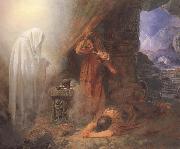 |
Edward Henry Corbould,RI,RWS -- Click Here
|
|
1815-1905
Painter, illustrator and sculptor, son of (2) Henry Corbould. A pupil of Henry Sass (1788-1844) and a student at the Royal Academy, he showed more wide-ranging interests than his father or uncle. He worked in watercolour and briefly in sculpture, winning gold medals for both from the Society of Arts (Fall of Phaeton, watercolour, 1834; St George and the Dragon, sculpture, exh. RA 1835; both untraced). He designed monumental figures for an unexecuted London County Council sculpture project for Blackfriars Bridge (1889), but he concentrated primarily on watercolours of literary and historical subjects, which he exhibited with the New Water-Colour Society from 1837 until 1898. |
|
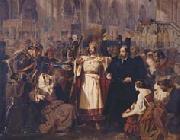 |
Edward Corbould -- Click Here
|
|
(b London, 5 Dec 1815; d London, 18 Jan 1905) |
|
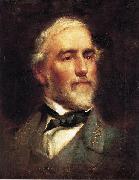 |
Edward Caledon Bruce -- Click Here
|
|
painted Robert E. Lee in 1865 |
|
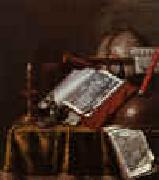 |
Edwaert Collier -- Click Here
|
|
Dutch
1640-1706
Evert Collier was born about 1640 in Breda, Noord-Brabant, and died in 1708. He is believed to have trained in Haarlem, as his earliest paintings show the influence of Pieter Claesz and Vincent Laurensz van der Vinne. By 1667, he had moved to Leiden, where he became a member of the Guild of St. Luke in 1673. He moved to Amsterdam by 1686 and to London in 1693. He was buried September 8, 1708 at St. James, Piccadilly.
The Denver Art Museum, the Honolulu Academy of Arts, the National Portrait Gallery (United Kingdom), the Rijksmuseum (Amsterdam) and the Tate (London) are among the public collections having paintings by Evert Collier. |
|
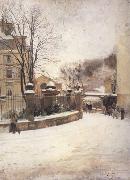 |
Edouard Castres -- Click Here
|
|
Swiss 1838 - 1902
Swiss painter. His father was a clock engraver, and he initially trained as an enamellist. He took drawing lessons from Barthelemy Menn and attended the Ecole des Beaux-Arts in Paris from 1859. He soon decided to concentrate on oil painting. He was assistant to the genre and figure painter Eduardo Zamacois y Zabala (1842-71). In the Franco-Prussian War he joined the Red Cross, moving into Switzerland at the beginning of February 1871 with the army led by Gen. Bourbaki. He painted military scenes from sketches carried out on the battlefield and received consistently good reviews, which also brought financial success. He was commissioned by a Belgian panorama company to record the entry of the French army into Switzerland, which he had witnessed in 1871. He spent the winter of 1876-7 on site at Les Verrieres, painting preparatory studies, and in 1881 he completed the panorama, Gen. Bourbaki's Army Retreating into Switzerland (Lucerne, Panorama). He was aided by nine assistants, recruited from among Menn's pupils, who included Ferdinand Hodler. The work was exhibited in Geneva and was brought to a rotunda in Lucerne in 1889. Among panorama paintings it is a work of a high order: despite the colossal dimensions and the barely comprehensible mass of people depicted, the dominant impression is of individual suffering. |
|
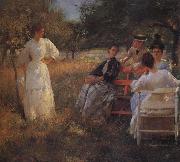 |
Edmund Charles Tarbell -- Click Here
|
|
American Impressionist Painter, 1862-1938
American painter, illustrator and teacher. He attended drawing lessons at the Normal Art School, Boston, MA, and art classes with W. A. G. Claus. From 1877 to 1880 he was apprenticed to a lithographic company in Boston. In 1879 Tarbell entered the School of the Boston Museum of Fine Arts, where he was a pupil of Otto Grundmann (1844-90), a former student of Baron Hendrik Leys in Antwerp. In 1883 Tarbell left for Paris with his fellow student Frank W. Benson. Both Tarbell and Benson attended the Acad?mie Julian, where they studied with Gustave Boulanger and Jules Lefebvre. They travelled to Italy in 1884 and to Italy, Belgium, Germany and Brittany the following year. Tarbell returned to Boston in 1886. Initially after his return, Tarbell made a living from magazine illustration, teaching privately and painting portraits. In 1889 Tarbell and Benson took Grundmann's place at the Museum School. |
|
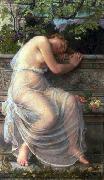 |
Edith Corbet -- Click Here
|
|
(28 December 1846 Goulburn, New South Wales - 1920 Hampstead), was a Victorian landscape painter, having close associations with the Macchiaioli group (also known as the Tuscans or Etruscans), who, in a break with tradition, painted outdoors in order to capture natural light effects and favoured a panoramic format for their paintings.
Edith was born in Goulburn, New South Wales, Australia, the second daughter and fifth child of Henry Edenborough and Margaret Stedman. The Edenborough family came from Leicestershire, but relocated to London, where they became prosperous merchants in hosiery and silk. Henry Edenborough was a sea captain and made several voyages to Australia between 1833 and 1837, deciding to settle there in 1840. He acquired a farm south of Goulburn known as 'Wollogorang' and built "a handsome two-storey brick and stone rubble building notable for its interesting French windows and its impressive outbuildings". This was the family home until 1854 when Henry and Margaret sold the property to John William Chisholm, and returned to England with their family of six children. Henry died in 1855 at Chesham Lodge in Surrey, aged 43. In 1861 the British census records show Edith, 14 years old, living with her widowed mother in Kensington. The 1871 census shows her living with her sister Annie, noted as head of household, at 5 Sheffield Gardens in Kensington, in which year she was exhibiting her work in London.
She married the painter Arthur Murch and moved to Rome where she painted with Giovanni Costa, leader of the Macchiaioli group. In 1876 they both stayed in Venice. Olivia Rossetti Agresti wrote: "Costa had a very high opinion of this artist's gifts and used to remember with pleasure how on that occasion they used to go out together to paint from nature at Fusino" (Agresti, 1904).
Edith Murch frequently exhibited from 1880 to 1890 at the Grosvenor Gallery and the New Gallery. In 1891 she married Matthew Ridley Corbet, one of the Macchiaioli group's leading members, after which she exhibited mainly at the Royal Academy, visiting Italy and living in London for the remainder of her life.
|
|
 |
Ebenezer Colls -- Click Here
|
|
(1812- 1887 ) - Painter
painted Sailboats in a squall in |
|
|
|
|
| | |
|
|
|
|